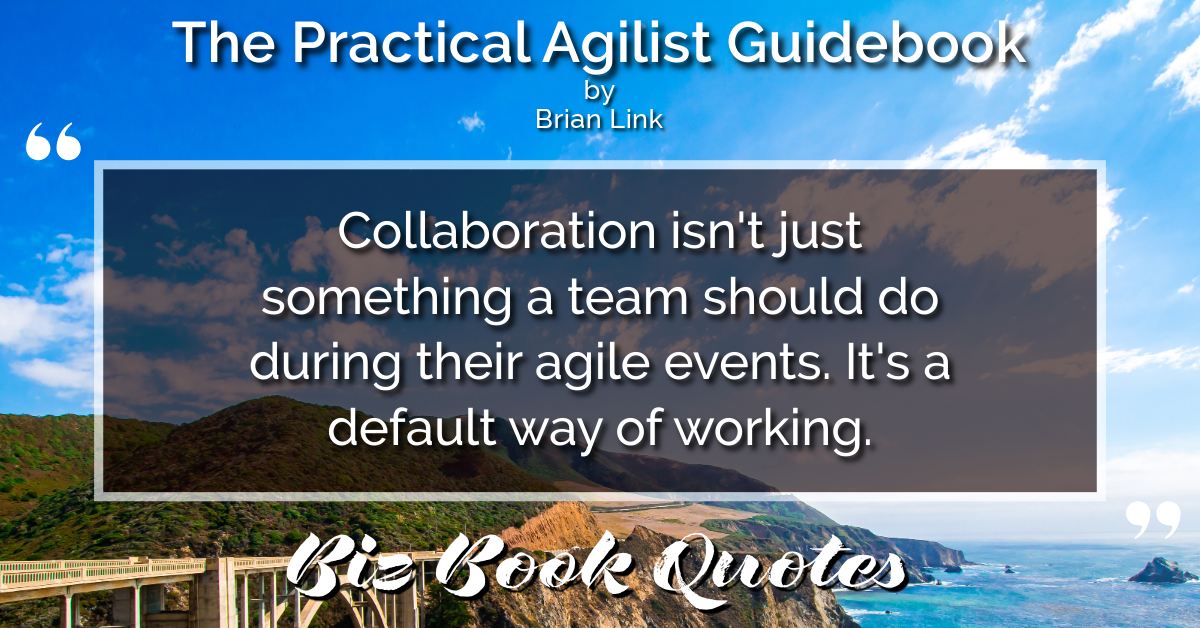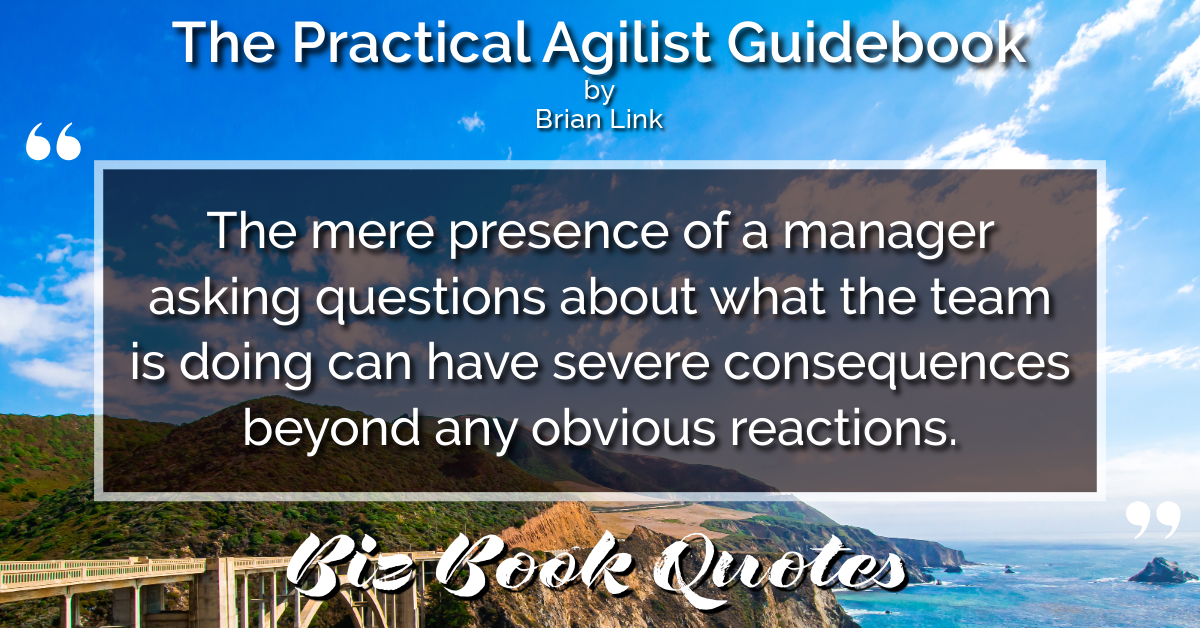|

|
The Practical Agilist Guidebook:
…the ability to keep the knowledge for a given product or service owned persistently by the same team can only help an organization looking to evolve into a more product-centric orientation.
|
029 |
|

|
The Practical Agilist Guidebook:
When companies fund teams, there are many benefits and longer lasting impacts, including a much greater chance of success at being agile.
|
029 |
|

|
The Practical Agilist Guidebook:
Most [organizations] struggle with the full end-to-end value stream and fail to include the skills of research and product discovery as well as the testing, DevOps, deployment, and support skills on the team.
|
030 |
|

|
The Practical Agilist Guidebook:
[Building fully cross-functional teams] is not trivial and often requires a fundamentally new approach at how to organize, distribute, and cross-train skills throughout the organization.
|
030 |
|

|
The Practical Agilist Guidebook:
The people who are the most intimate with the information should be able to make better decisions about the products they build and support.
|
038 |
|

|
The Practical Agilist Guidebook:
Collaboration isn’t just something a team should do during their agile events. It’s a default way of working.
|
039 |
|

|
The Practical Agilist Guidebook:
…the concept of an agile team’s independence is largely a reflection of the environment and support of the leadership surrounding the team.
|
041 |
|

|
The Practical Agilist Guidebook:
The mere presence of a manager asking questions about what the team is doing can have severe consequences beyond any obvious reactions.
|
043 |
|

|
The Practical Agilist Guidebook:
Psychological safety is a delicate and extremely important aspect of how a team works.
|
043 |
|

|
The Practical Agilist Guidebook:
…your role as a leader and manager working with an agile team is to be supportive of the process and create the environment that enables their success.
|
044 |











